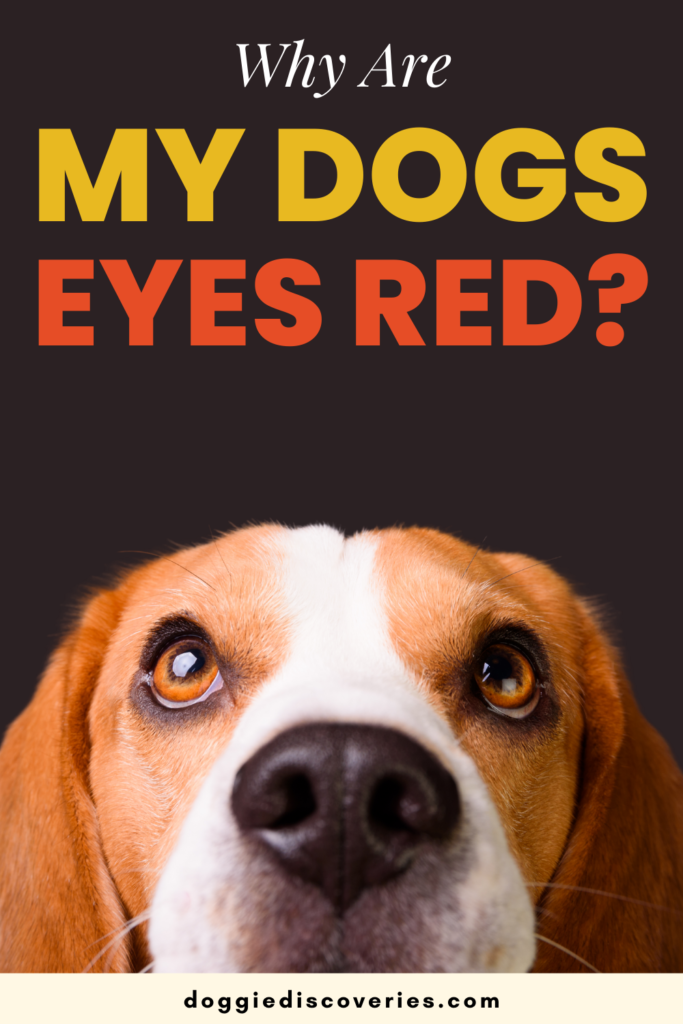Dog eye health is an important part of pet care that many owners overlook. Red eyes in dogs can be a sign of various health issues, ranging from minor irritations to more serious medical conditions.
Just like humans, dogs can experience eye problems that cause redness, discomfort, and potential vision complications. When a dog’s eyes appear red, it could indicate something as simple as allergies or as serious as an infection or injury.
Pet owners should pay close attention to their dog’s eye appearance and behavior. Redness might be accompanied by other symptoms like excessive tearing, squinting, discharge, or changes in eye movement.
Understanding the potential causes of red eyes can help dog owners determine when to seek veterinary care and ensure their furry friend’s health and comfort.

5 Common Reasons Why a Dog Might Have Red Eyes
Allergies
Dogs, like humans, can experience allergic reactions that affect their eyes. These allergies might be triggered by environmental factors like pollen, dust, mold, or certain foods.
When an allergic reaction occurs, the blood vessels in the eyes become inflamed, causing redness and irritation.
Dogs might also show additional symptoms such as excessive eye watering, frequent blinking, or scratching at their eyes.
Seasonal changes or exposure to new environments can worsen these allergic reactions.
Some dog breeds are more prone to allergies, and the redness might be accompanied by swelling or itching around the eye area.
Eye Infections
Bacterial or viral infections can cause significant eye redness in dogs. These infections can develop from various sources, including contact with other infected animals, dirty environments, or untreated eye injuries.
Symptoms often include not just redness, but also yellow or green discharge, crusty eye corners, and noticeable discomfort.
Conjunctivitis, a common eye infection, can make the white part of the dog’s eye look pink or red.
Some infections can spread quickly and might require immediate veterinary attention to prevent more serious complications or potential vision problems.
Physical Injury or Trauma
Dogs can easily injure their eyes through accidents, fights with other animals, or playing rough.
Even small scratches or foreign objects like dust, grass seeds, or small debris can cause significant eye irritation and redness. The eye’s blood vessels dilate when injured, causing the red appearance.
Dogs might paw at their eyes, squint, or show signs of pain when blinking. Some injuries might be serious and could potentially damage the cornea or lead to more significant eye complications if not treated promptly.
Glaucoma
Glaucoma is a serious eye condition where pressure inside the eye increases, causing redness, pain, and potential vision loss.
This condition can be inherited in certain dog breeds or develop due to other health issues.
The increased pressure damages the optic nerve and can lead to permanent blindness if untreated. Dogs with glaucoma might show additional symptoms like cloudy eyes, enlarged eye size, or visible discomfort.
Some dogs might become less active or show signs of pain when their head is touched.
Dry Eye Syndrome
Also known as keratoconjunctivitis sicca, this condition occurs when dogs don’t produce enough tears to keep their eyes properly lubricated.
Without sufficient moisture, eyes become red, irritated, and prone to infections. Dogs with dry eye syndrome might have a thick, mucus-like discharge and appear uncomfortable.
The eye surface can become damaged over time, leading to more serious complications.
Certain medications, autoimmune diseases, or nerve damage can cause this condition. Some dog breeds are more susceptible to developing dry eye syndrome.
Conclusion
Red eyes in dogs can be a sign of many different health issues, from simple allergies to serious medical conditions. While some causes are minor and easily treatable, others require immediate veterinary attention.
Dog owners should never ignore persistent eye redness or additional symptoms like discharge, pain, or changes in behavior. Watching your dog closely and understanding potential eye problems can help catch issues early.
When in doubt, always consult a professional veterinarian who can properly diagnose and treat your dog’s specific eye condition. Proper care and quick action can prevent more serious complications and protect your dog’s vision and overall health.


